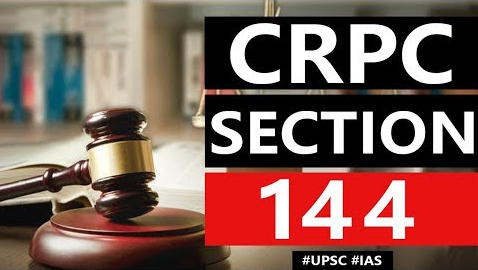Table of Contents

WHAT IS CODE OF CRIMINAL PROCEDURE?
- It is the main legislation on procedure for administration of criminal law.
- It was enacted in 1973 and came into force on 1 April 1974.
- The Act contains 484 Sections, 2 Schedules and 56 Forms.
- The CrPC was enacted for the first time in 1861 in the wake of the 1857 mutiny.
- The next landmark in codification was the 1882.
- Amended in 1898.
- Then According to 41st law commisssion report in 1973.
CODE OF CRIMINAL PROCEDURE VS INDIAN PENAL CODE
- The penal code defines a crime, for instance, as murder or rape.
- It will also provide punishment to be given once the crime is proved.
- CrPC on the other hand will determine the way in which the police, prosecutors and magistrates or judges will act during the investigation and trial of the case.
WHAT IS SECTION 144 CRPC?
- It is issued in urgent cases of security threat or riot.
- It bars the assembly of 5 or more people in an area where it has been imposed.
- It also empowers the authorities to block internet access.
- The notification is issued by the District Magistrate.
WHEN IT IS IMPOSED?
- When there are apprehensions of breach of public peace and order.
- All civilians are barred from carrying of weapons including lathis, sharp-edged weapons or firearms in public places except for police or paramilitary or security forces.
DURATION OF SECTION 144 CRPC?
- It can remain in force for not more than 2 months.
- However, if the state government considers it necessary for preventing a riot, it can extend it for not more than 6 months from the date of issuance of the initial order.
PUNISHMENT UNDER THIS SECTION?
- The maximum punishment for the breach of section 144 of CrPC is 3 years.
- Anyone who obstructs the police from breaking the assembly is also punishable under law.
HOW IT IS DIFFERENT FROM CURFEW?
- Section 144 CrPC is not equivalent to a curfew.
- Curfew orders are issued in more severe situations.
- In curfew people are instructed to stay indoors for a specific time or period.
- Establishments such as markets, schools, colleges, etc. are ordered to remain shut.

Latest Burning Issues | Free PDF






















 WhatsApp
WhatsApp